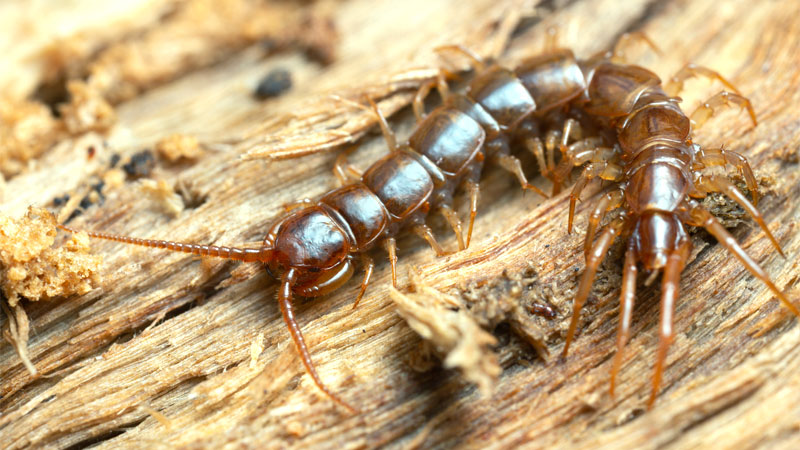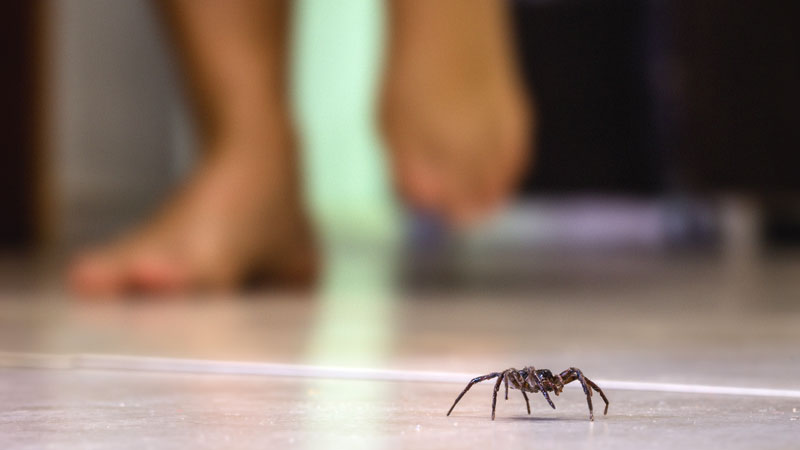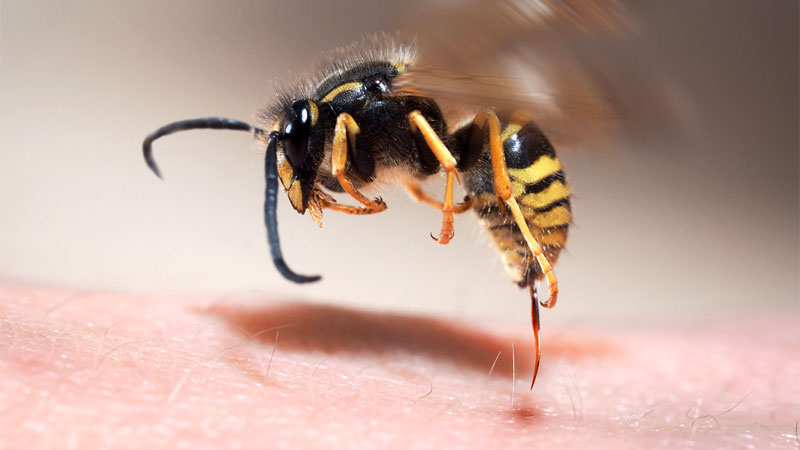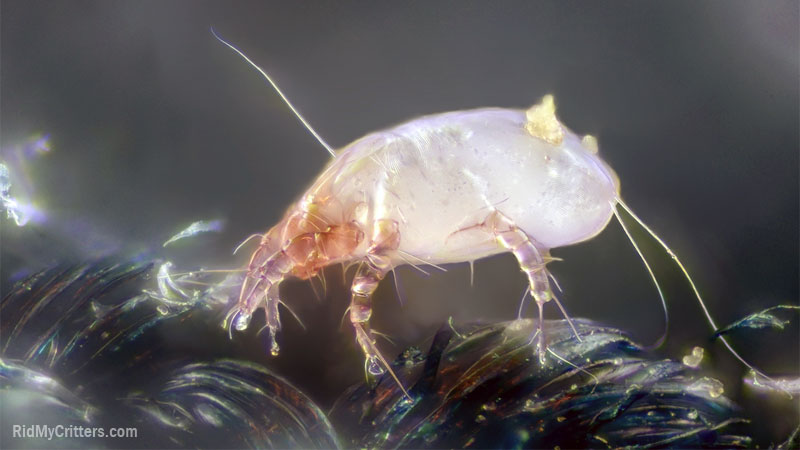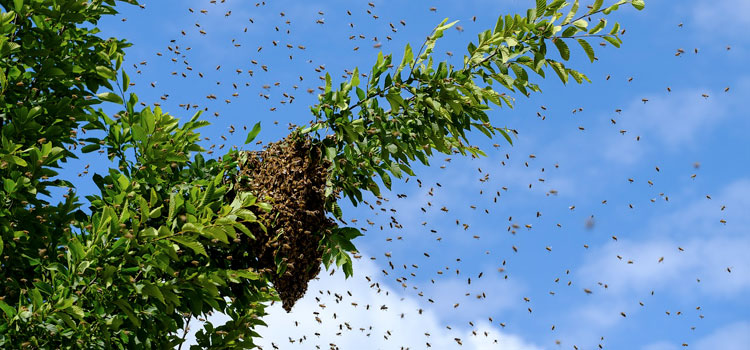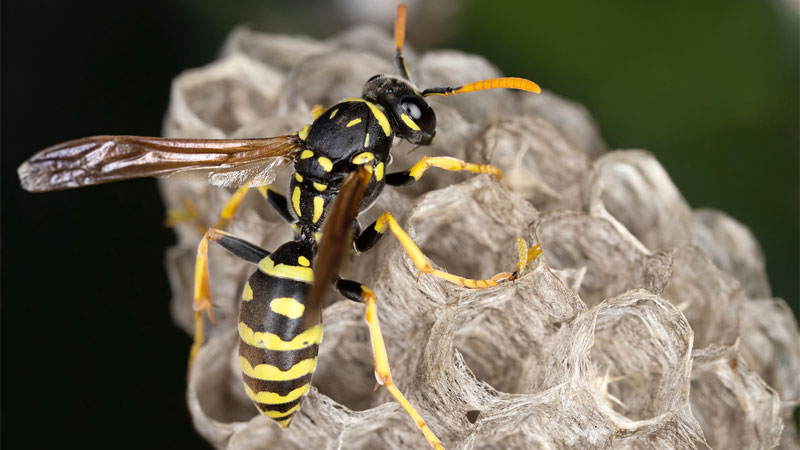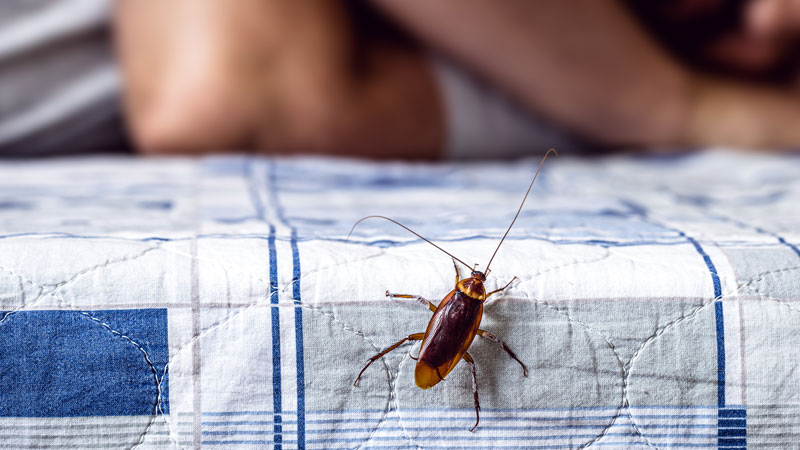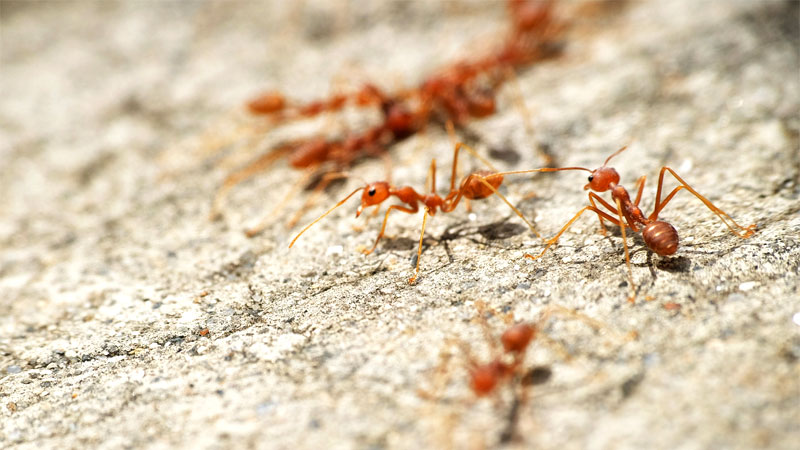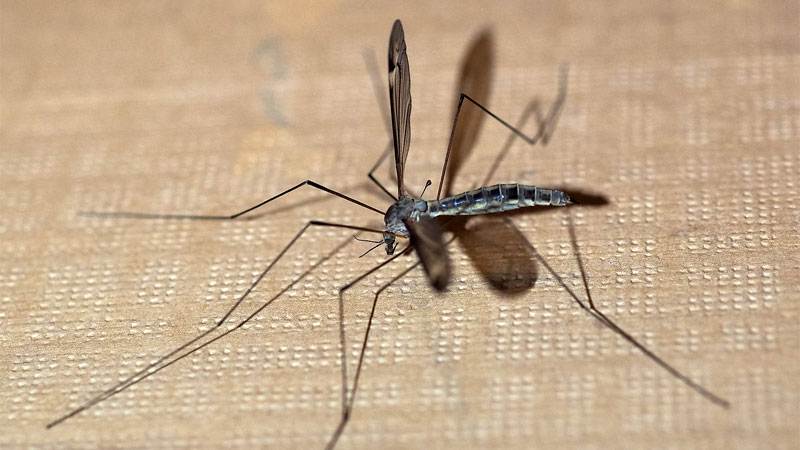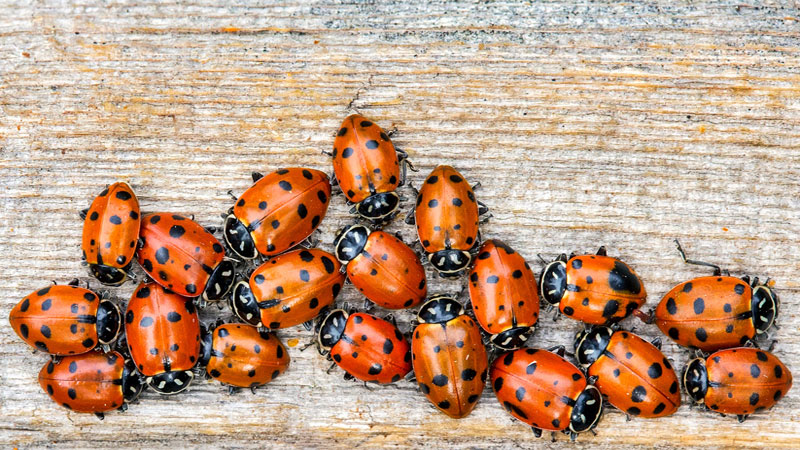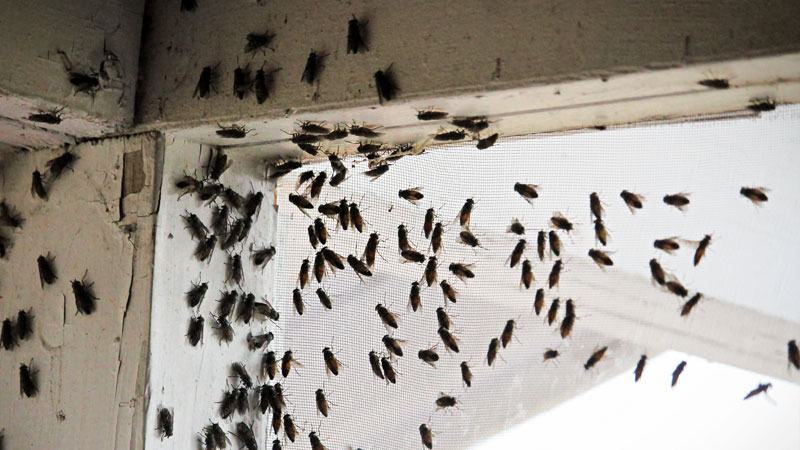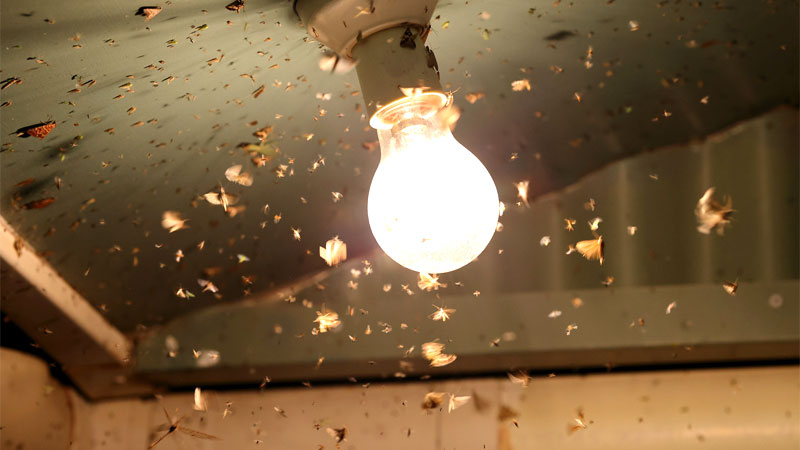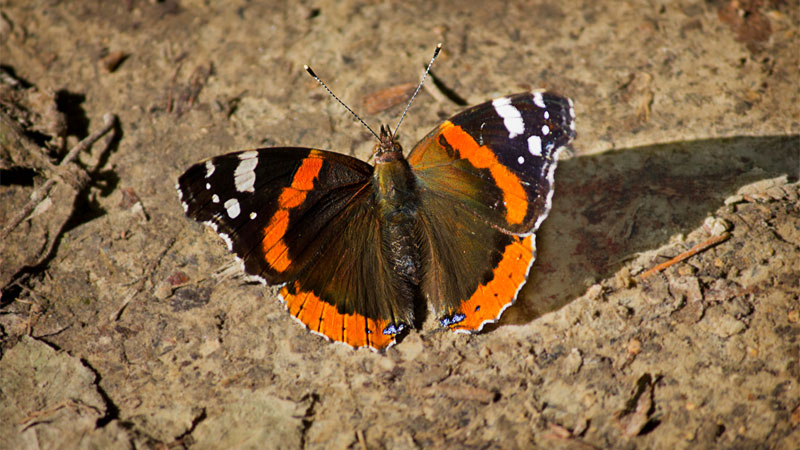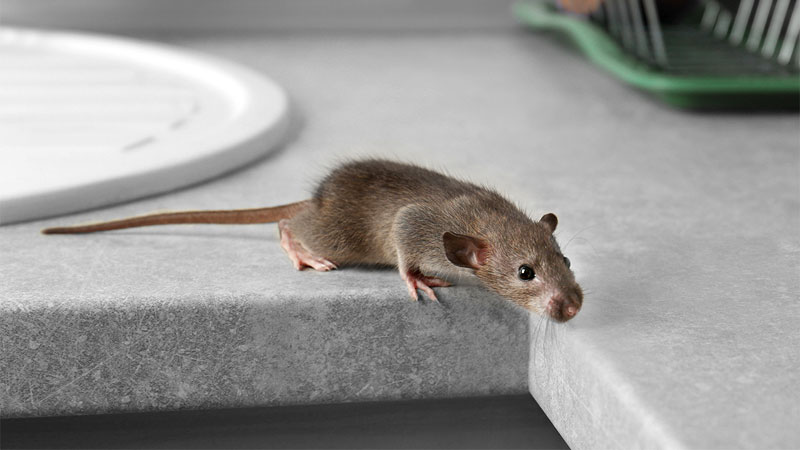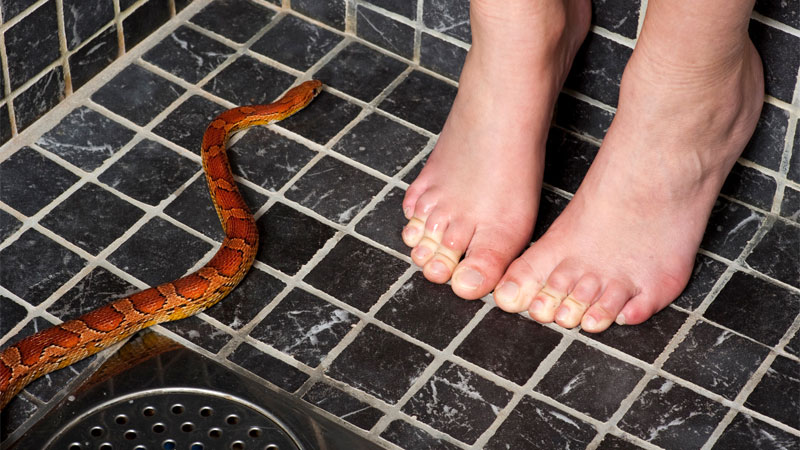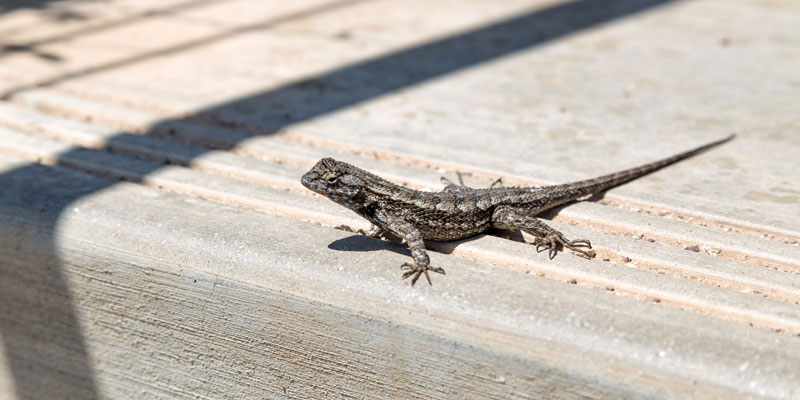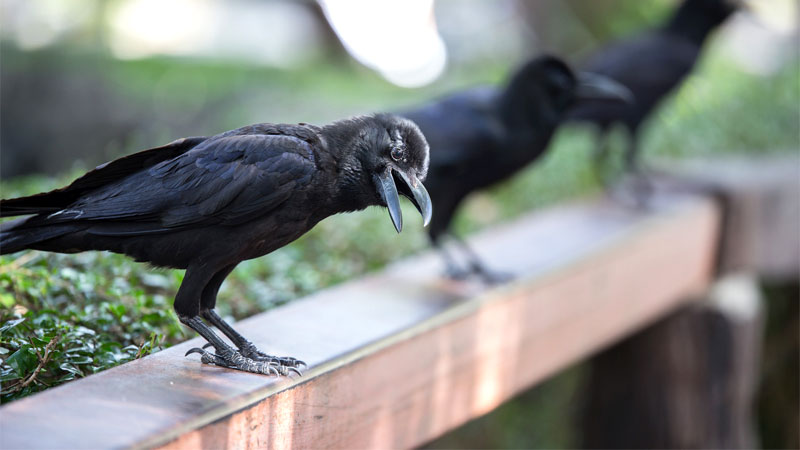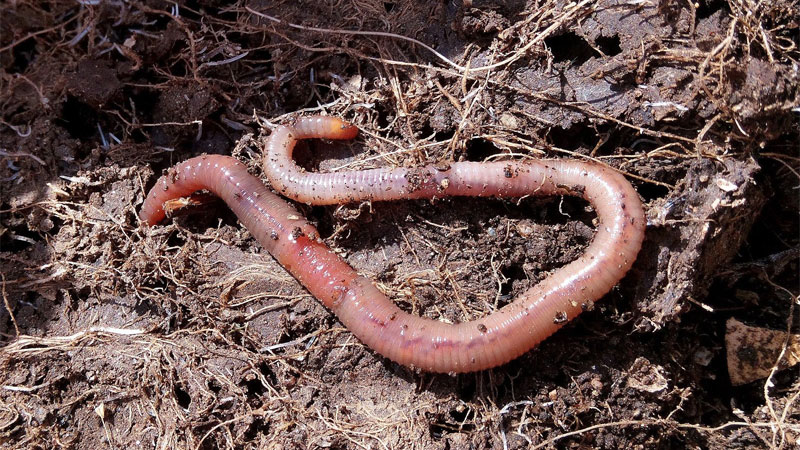These days, it seems like everyone is accusing everyone else of having certain phobias, but the reality is that politicizing and weaponizing phobias is a terrible crime.
In fact, it’s believed that one in ten adults suffer from an actual phobia, while one in five teens have an active phobia. Phobias can be a minor nuisance or highly debilitating, but know that they can be treated and even cured.
We here at RMC understand these disorders are usually the result of a past trauma and that making light of them is a huge disservice to those actually dealing with a phobia.
As a result, we’re presenting a list of 20 common phobias encountered in the pest control world. You may be familiar with a few of these, and some might be new.
Common Bug Phobias
The term “bug” is sometimes used to describe all tiny creepy crawlies. However, it’s most often used to describe any tiny critter that has more (or less) legs than insects.
Because insects are often called bugs colloquially, there’s no difference in terms between a fear of bugs or of insects. Here are a few of the most common (non-insect) bug phobias.
#1 – Fear of Arachnids (Arachnophobia)
Of all the bug phobias out there, this is perhaps the best known. Most people associate arachnophobia with the fear of spiders. However, it can also apply to other arachnids, such as scorpions and spider mites.
There’s also a lot of variation in what causes the phobia to trigger. Some react to tiny spiders, some to large spiders such as tarantulas and wolf spiders. It may be related to a fear of being bitten or of the speedy movements of jumping spiders and similarly quick movers. Or it may even just have to do with their many legs.
#2 – Fear of Getting Stung (Cnidophobia)
Okay, so this isn’t specifically a critter phobia, but it’s related to a lot of the bug and insect phobias we’re covering here. Cnidophobia may become a related phobia for people with venom allergies, and it can also involve plants such as stinging nettles or hypodermic needles.
People suffering from this phobia may avoid the outdoors in nice weather or wear extra protective clothing. Therapy tends to be the most effective treatment at this time.
#3 – Fear of Centipedes (Scolopendrphobia)
Scolopendrphobia, sometimes called chilopodophobia, is the phobia of centipedes – a most understandable one, at that.
These venomous, multilegged critters are fast and creepy, making them pure nightmare fuel even for people who don’t have this phobia.
Sufferers often obsessively clean or set traps all over their homes to minimize the risk of an encounter. A related phobia, Xarantaphobia (AKA Myriapodophobia) is the fear of millipedes, and the two often occur together.
#4 – Fear of Mites (Acarophobia)
Acarophobia is a subcategory of arachnophobia that centers more specifically on ticks and mites.
In many cases, this phobia is linked more specifically to the risk of Lyme disease, an incurable and nasty infliction carried by ticks. The fear most often manifests when a sufferer is faced with entering woodland where ticks might be prevalent.
Common Insect Phobias
Entomophobia is the term used to describe people with a general fear of insects. It’s also been commonly referred to as acarophobia (confusingly enough) and insectophobia. Also, as mentioned, it can describe the phobia of bugs.
These are very common and quite often relate to allergies. In other cases, the phobia of insects relate to their uncleanliness and the risk of food contamination or even deadly diseases, such as bubonic plague.
#5 – Fear of Bees (Apiphobia)
Also known as Melissaphobia (melissa comes from the Greek word μέλισσα, meaning “bee”), apiphobia is actually a very sensible fear, most often caused by the trauma of being stung as a small child or a severe allergy.
While people with this phobia often protect themselves with repellents to prevent close contact, more severe cases can result in panic if the person sees or even hears a bee.
#6 – Fear of Wasps (Spheksophobia)
While one might think that phobias regarding bees and wasps would be almost identical, Spheksophobia is actually far more intense in many sufferers.
Most often, the intensity is linked to the wasp’s ability to sting multiple times, and some non-allergic people even believe wasps can kill them with multiple stings. Curing this phobia can be a lot more difficult because exposure therapy is often not an option.
#7 – Fear of Cockroaches (Katsaridaphobia)
Nobody likes roaches, but katsaridaphobia takes things one step further. Just about every aspect of cockroaches can lead to this phobia, from their fast movement, stealthiness, appearance, or even their status as disease vectors.
But while this is one of the most understandable phobias out there, it’s also led to some very strange coping mechanisms, including crushing fetishes.
#8 – Fear of Ants (Myrmecophobia)
Ants are often a huge problem for homeowners, and we cover them often here. However, the risk of contaminated food or structural damage isn’t the only reason people can get myrmecophobia.
In fact, the organized columns containing dozens of these tiny critters and their seemingly mindless (although we know now this isn’t the case) activity is a major creep factor for many people.
#9 – Fear of Crane Flies (Tipulophobia)
There are many theories as to why the phobia of crane flies (aka: mosquito eaters) is so common. For some, it seems to be the spindly legs. In others, the resemblance to mosquitoes may cause this fear to occur in conjunction with anopheliphobia.
This resemblance to mosquitoes can also spark panic in those suffering from cnidophobia, even though crane flies don’t actually have the ability to sting. Whatever the cause, however, this phobia is surprisingly common and can be difficult to treat.
#10 – Fear of Ladybugs (Coccinellidaephobia)
This is a curious little phobia that apparently has taken social media by storm. Coccinellidaephobia relates primarily to ladybugs but can also involve similar-looking beetles, such as Japanese lady beetles.
While ladybugs are beneficial and prey upon several plant pests, Japanese lady beetles are quite destructive to plants yet look almost identical to the classic ladybug. Whether this is the cause or it’s the general appearance, it’s a shame the phobia of ladybugs has become clickbait when it should be given more serious attention.
#11 – Fear of Flies (Pteronarcophobia)
Now let’s get something straight on this one. A lot of people hate flies (in addition to the aforementioned crane flies) with a passion. They’ll often react in zany ways when a fly is around (like run directly for their Bug-a-Salt), but people who have pteronarcophobia are a bit different.
Their fear is based on the idea that flies are unclean disease carriers and may be influenced by parents or relatives who obsessed over flies frequently when the person was young.
Sufferers avoid outdoor gatherings and cannot enter a room where a fly has been seen. Thankfully, this is one of many phobias that can be treated with some effort.
#12 – Fear of Moths (Mottephobia)
This is a somewhat less common phobia and usually occurs as a result of a traumatic childhood encounter. In many cases, the sufferer will grow out of their fear of moths, although this isn’t always true.
Often, the fear more precisely involves the damage moth larvae cause to books and textiles, although it can also involve the way they fly or their overall appearance.
#13 – Fear of Butterflies (Lepidopterophobia)
Lepidopterophobia is an extremely rare phobia that’s usually accompanied by other phobias regarding insects or flying critters, but can also be linked to delusory parasitosis – a condition where the sufferer hallucinates that they can feel bugs crawling on them, as is sometimes the case with bed worms.
In some cases, the colorful wings beating rapidly can trigger a fear response. But in other cases, it could be the butterfly’s appearance or the knowledge that caterpillars are common plant pests.
#14 – Fear of Mosquitoes (Anopheliphobia)
This phobia is often linked to the fact that mosquitoes drink blood. Their spindly bodies can also be a factor. However, in many cases, the fear revolves more around the risk of malaria or West Nile virus. Due to their similar appearance, it’s not uncommon for people with a phobia of mosquitoes to also have a crane fly phobia.
Due to mosquitoes being a type of fly, those with a phobia of flies or fear of flying insects in general will often also have this phobia.
#15 – Fear of Beetles (Skathariphobia)
This one can be tough to pin down, as the phobia of beetles can come from a wide range of potential factors. Sometimes, a fear of specific beetle types can lead to a more general feel.
For others, the small, hard shells will do it. Beetles are also commonly associated with food contamination. The exact cause tends to dictate which treatment methods are available.
Other Critter Phobias
It might come as a surprise to some of our readers, but zoophobia (the fear of animals) is actually the most common phobia in women. Some zoophobes are afraid of all animals, but most are only afraid of certain kinds. Here are a few we often come across in the pest world.
#16 – Fear of Mice and Rats (Musophobia)
Musophobia is a very common phobia and can easily extend to other critters that resemble mice or rats, such as hamsters. There are a lot of reasons people might have this phobia, such as the long tails, their teeth, or their ability to scurry around.
The good news is that this is one of the easier phobias to cure. Of course, that doesn’t mean you’ll suddenly want to start breeding mice as pets.
#17 – Fear of Snakes (Ophidiophobia)
One of the most famously portrayed phobias in movie history, poor Indiana Jones was constantly finding himself face-to-face with snakes – which was his one true fear.
Whether it’s a harmless garter snake or a more dangerous species such as copperheads, this fear is very real for those that suffer from it. Ironically, the famous archaeologist was unwittingly getting the very exposure therapy that helps real life sufferers (albeit in a far less controlled manner).
#18 – Fear of Bats (Chiroptophobia)
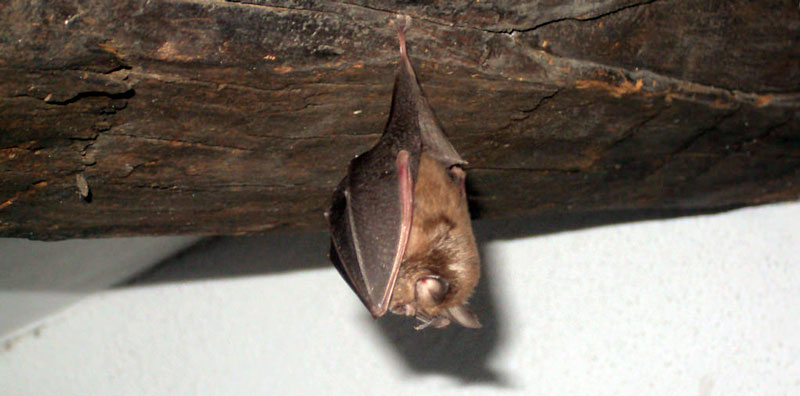
Chiroptophobia is a phobia that makes this author really sad. It’s based heavily on pop culture references to bats drinking blood (only three species in the Western hemisphere drink blood, and the amount is tiny) or rabies.
It’s extremely rare for a bat to actually have rabies, however. The sad truth is that bats are wonderful and highly beneficial critters (putting up a bat house is highly recommended).
However, many species have often been hunted into threatened or endangered status as a result of chiroptophobia.
#19 – Fear of Reptiles and Lizards (Herpetophobia)
This is one of several umbrella phobias that have more specific phobias included. Herpetophobia is an irrational fear of all sorts of cold-blooded scalies, including amphibians, lizards, reptiles, and snakes.
Psychologists believe the fear may be rooted in human evolution. After all, there’s a wide range of venomous critters that fall under these categories (such as many species of frogs and toads).
As this is a general phobia, the precise symptoms and treatment methods can vary greatly from one person to another.
#20 – Fear of Birds (Ornithophobia)
Contrary to popular belief, Alfred Hitchcock didn’t invent ornithophobia with his infamous horror movie. This phobia can cover sparrows, owls, hawks, and everything in between.
As usual, there’s no specific factor that causes this fear. It’s often linked to some past trauma or other phobias (such as those related to disease or cleanliness). The good news is that those cured of it often develop a deep love of falconry or other bird-related activities.
#21 – Fear of Worms (Vermiphobia)
This is an interesting one. Some people count worms as bugs, but they’re actually known as helminths in the entomological world.
This phobia is alternatively known as helminthrophobia, scoleciphobia, and vermiphobia. But whatever you call it, the phobia can apply to parasitic worms, earthworms, and sometimes extends to other wormlike critters such as caterpillars and millipedes.
The traditional treatment for this phobia usually involved fishing, but there are somewhat less gruesome methods available these days.
#22 – Fear of Rabbits (Leporiphobia)
Those who think that rabbits are all cuddles and love probably won’t understand leporiphobia. However, rabbits can bite in self-defense and their hopping can be traumatic to small children. There’s also the fact that rabbits used to be considered a type of rodent.
Others with this phobia gained it from encountering people in creepy bunny costumes (not always named Frank). Or maybe they remember that it took only one vorpal bunny to nearly end King Arthur’s quest for the Holy Grail.
The good news is that this phobia is usually curable through exposure therapy.
And That’s Only the Beginning…
Before we go, here’s a little checklist you can use to see if you have a phobia or mere aversion to a critter. These are all symptoms a person with a phobia might experience.
The more you suffer when encountering a critter, the more likely you have a phobia. If you think you do, you should consult with a professional psychologist to see what remedies are available.
- Desire to avoid touching or visiting a place where the critter was recently seen
- Feelings of anxiety
- Notable fear of allergic reactions
- Inability to move and/or urge to flee
- Increased heart rate
- Interruptions to daily life
- Panic attacks
- Sudden sweating
Note that the degree of each symptom can also vary from one person to another.
We know this list doesn’t cover every pest-related phobia out there. Please let us know if there’s a phobia you’d like to know more about. We’ll try to include the answers here.
- How to Get Rid of Hawks - March 8, 2024
- How to Get Rid of Pill Bugs (Rolly Pollies) - March 1, 2024
- How to Get Rid of Groundhogs (Woodchucks) - February 5, 2024

